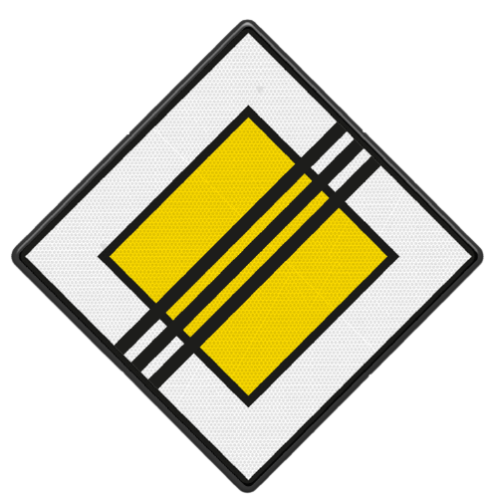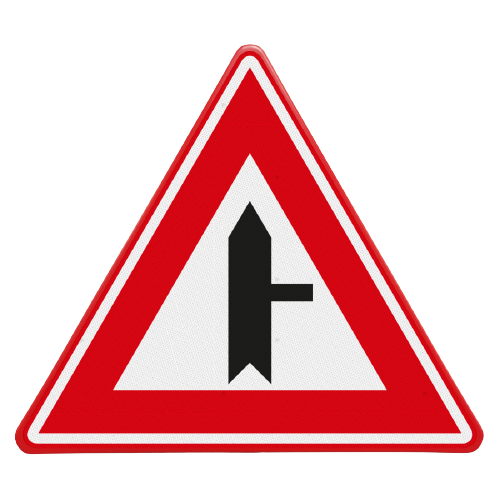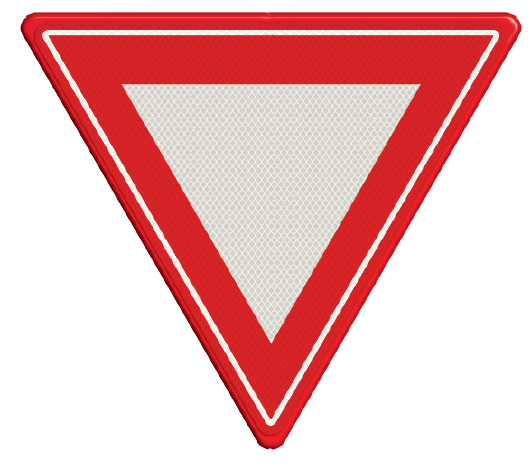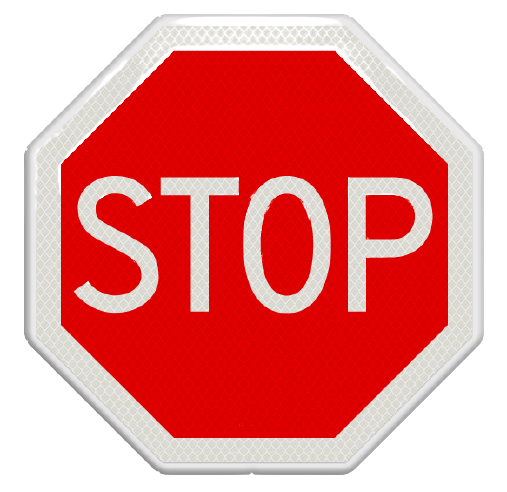Category B – Priority

Sign B1 – Priority road
The shape of the signs for the priority road and the end of the priority road is unique. In this way, these signs can also be recognized at the back, or if these signs are covered in snow. You then only have to consider whether the sign has been placed on the priority road or the end of the priority road.
Within built-up areas, this sign is placed immediately before side roads of the priority road.
Outside built-up areas this sign is always placed at the beginning of a road section (after an intersection).
Placing the signs is repeated before or after each side road, unless the distance to the next side road is less than 50 meters. The sign is not used in an erf, roads, and 30 or 60km zones.
If you are driving on a road where this sign is placed, you are driving on a priority road. This means that as a driver you do not have to give way to traffic from left and right. However, having priority does not always mean: getting priority. So always pay close attention to traffic from the right and left.

Sign B2 – End of priority road
A priority road can be terminated by placing this sign. If you pass this sign, the priority road ends and you must again give right of way to drivers coming from the right, as well as to drivers of trams coming from the left or right.
A priority road can also be terminated by sign B6, give way to drivers on the intersecting road.
Another possibility is sign B7, stop; give way to drivers on the intersecting road.

Sign B3 Priority junction
This sign indicates a priority junction.
Basically the same meaning as sign B1, but then not applicable to the entire road, but only to the relevant junction. The next junction can be an equivalent junction. This board is always placed in combination with board B6, B7 and/or shark teeth on the crossing road.
This sign is not applied at an junction of bicycle paths or bicycle/moped paths. If it is desirable to regulate the right of way, only the application of shark teeth on the road surface is sufficient.
 Sign B4 Priority junction Side road left
Sign B4 Priority junction Side road left
Most people think this sign is a bit strange because the meaning of this sign is that drivers from the left must give way to you.
Now many people think that we always have. This is correct. Only now a tram comes from the left; You normally have to give the tram way, so not in this case.
This sign indicates a priority junction. Basically the same meaning as sign B1, but then not applicable to the entire road, but only to the relevant junction. The next junction can be an equivalent junction. This board is always placed in combination with board B6, B7 and/or shark teeth on the crossing road.

Sign B5 – Priority junction Side road right
At an equal junction, you normally have to give way to all drivers from the right.
If this sign is posted at this junction, drivers approaching from the right must give way to you. Also drivers of trams.
This sign indicates a priority intersection.
Basically the same meaning as sign B1, but then not applicable to the entire road, but only to the relevant intersection. The next intersection can be an equivalent intersection. This board is always placed in combination with board B6, B7 and/or shark teeth on the crossing road.

Sign B6 – Give priority to drivers on the main road ahead
The shape of this sign is unique. This means that this sign can also be recognized from the back, or if the sign is covered with snow. If you are approaching a junction where this sign is located and no drivers are approaching the crossing road that you should give way to, you do not need to stop and then cross the junction.
You must give way to drivers on the crossing road, not to pedestrians on the crossing road.
If you want to turn right at a priority intersection, look to the right as well. Overtaking drivers can drive here, which drive on your side of the road.
Keep an eye out for crossing pedestrians. Pedestrians sometimes assume that they can go first. If your speed is quite slow, or if you have stopped to give way to another vehicle, they may suddenly cross the road.
Show the drivers on the crossing road that you actually intend to give way by your speed and approach. Braking hard at the last moment and coming to a stop just before the crossing road is not considered to be giving way.

Sign B7 – Stop; give priority to drivers on the main road ahead
The shape of this plate is unique. This means that this sign can also be recognized from the back, or if the sign is covered with snow.
If you approach an intersection where this sign is located and no drivers are approaching the intersecting road to whom you should give way, you must still stop before you can continue. You must then stop before the applied stop line. You must give way to drivers on the crossing road, not at pedestrians on the crossing road.
If you want to turn right at a priority junction, look to the right as well. Overtaking drivers can drive here, which drive on your side of the road.
Keep an eye out for crossing pedestrians. Pedestrians sometimes assume that they can go first. If your speed is quite slow, or if you have stopped to give way to another vehicle, they may suddenly cross the road.
Show the drivers on the crossing road that you actually intend to give way by your speed and approach. Braking hard at the last moment and coming to a stop just before the intersecting road is not considered to be giving way. Leave the intersection clear when giving way.
